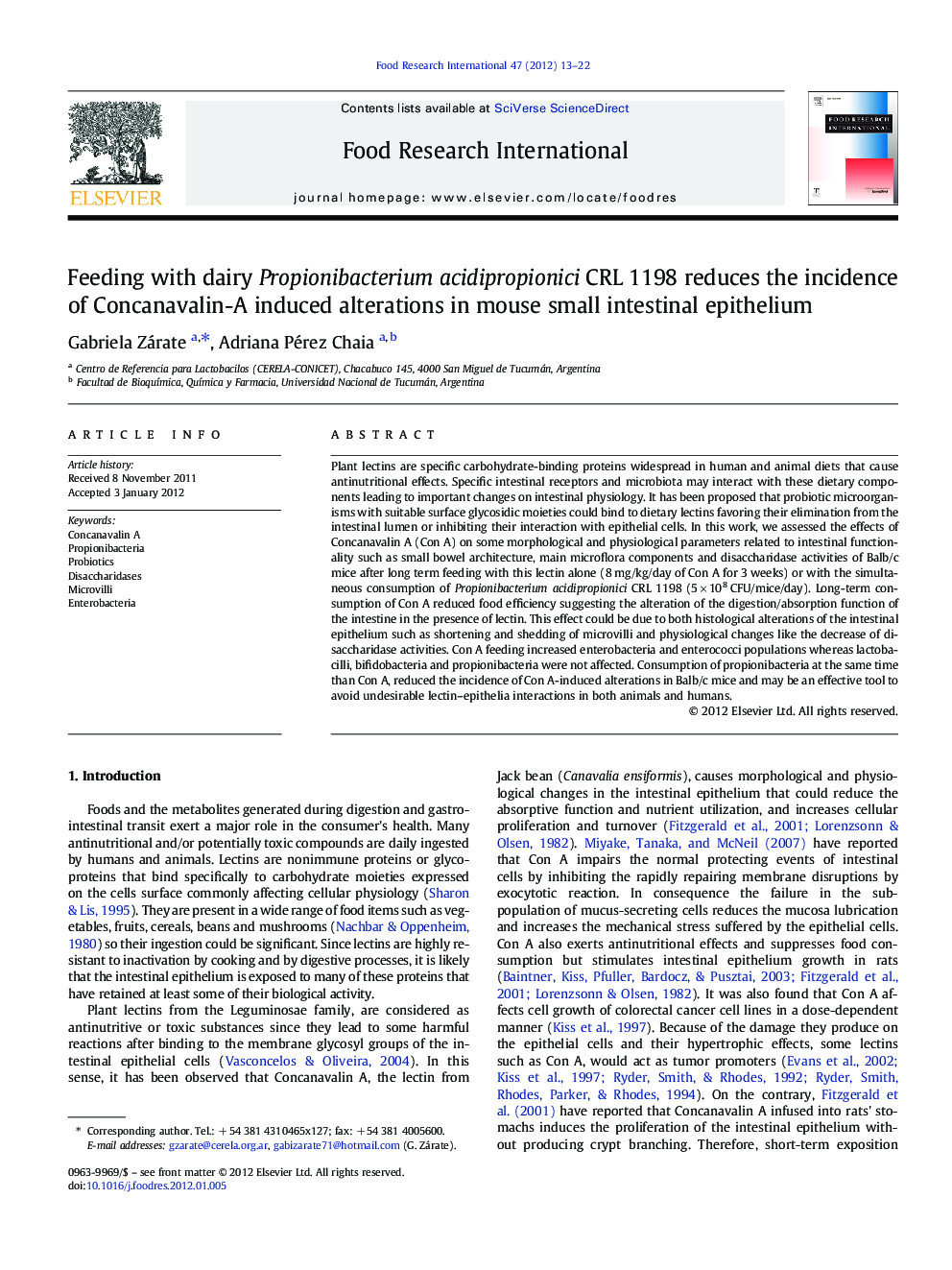| Article ID | Journal | Published Year | Pages | File Type |
|---|---|---|---|---|
| 4561936 | Food Research International | 2012 | 10 Pages |
Plant lectins are specific carbohydrate-binding proteins widespread in human and animal diets that cause antinutritional effects. Specific intestinal receptors and microbiota may interact with these dietary components leading to important changes on intestinal physiology. It has been proposed that probiotic microorganisms with suitable surface glycosidic moieties could bind to dietary lectins favoring their elimination from the intestinal lumen or inhibiting their interaction with epithelial cells. In this work, we assessed the effects of Concanavalin A (Con A) on some morphological and physiological parameters related to intestinal functionality such as small bowel architecture, main microflora components and disaccharidase activities of Balb/c mice after long term feeding with this lectin alone (8 mg/kg/day of Con A for 3 weeks) or with the simultaneous consumption of Propionibacterium acidipropionici CRL 1198 (5 × 108 CFU/mice/day). Long-term consumption of Con A reduced food efficiency suggesting the alteration of the digestion/absorption function of the intestine in the presence of lectin. This effect could be due to both histological alterations of the intestinal epithelium such as shortening and shedding of microvilli and physiological changes like the decrease of disaccharidase activities. Con A feeding increased enterobacteria and enterococci populations whereas lactobacilli, bifidobacteria and propionibacteria were not affected. Consumption of propionibacteria at the same time than Con A, reduced the incidence of Con A-induced alterations in Balb/c mice and may be an effective tool to avoid undesirable lectin–epithelia interactions in both animals and humans.
► Plant lectins are specific antinutritional carbohydrate-binding proteins. ► Con A effects with/without propionibacteria on intestinal parameters were assessed. ► Long-term consumption of Con A reduced food efficiency and disaccharidase activities. ► Con A feeding also increased enterobacteria and enterococci populations. ► Propionibacteria reduced the incidence of Con A-induced alterations in mice.
